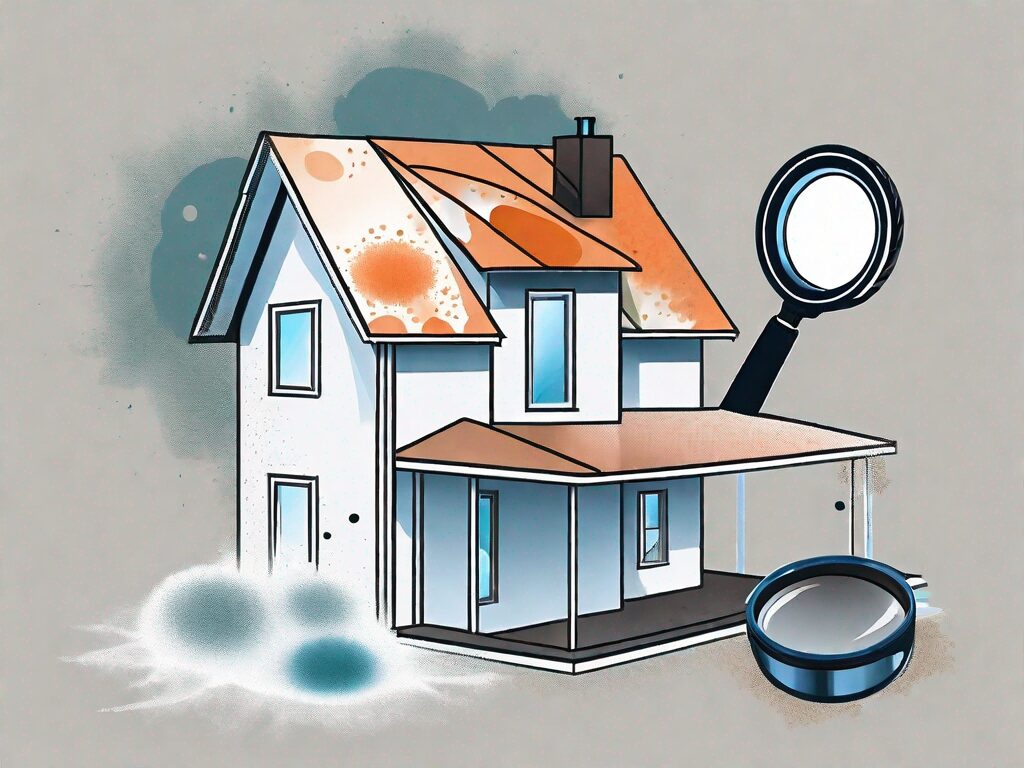
Agent A-Team or Solo Superhero? Finding the Right Real Estate Partner for Your Selling Journey in Wildwood Florida
When it comes to selling your home in Wildwood, Florida,…
January 29, 2024
Selling a house with mold can be a challenging endeavor, but with the right knowledge and guidance, you can navigate through this process smoothly. Mold can not only affect your property’s value but also pose serious health risks to potential buyers. In this ultimate guide, we will walk you through the steps to successfully sell a house with mold, starting with when to call for a mold inspection or proceed with remediation.
When it comes to selling a house with mold, timing is crucial. Knowing when to call for a mold inspection or proceed with remediation can help you make informed decisions and maximize your chances of selling the property.
Before deciding to sell your house, it’s important to look out for signs that indicate the presence of mold. Visible mold growth, musty odors, water damage, and allergic reactions in occupants are all red flags that necessitate a thorough mold inspection. By identifying these signs early on, you can take proactive steps to address the issue before listing your property.
Visible mold growth is a clear indication that there is a mold problem in your house. Mold can appear as black, green, or white patches on walls, ceilings, or other surfaces. If you notice any of these signs, it’s crucial to have a professional mold inspection to determine the extent of the problem and identify the type of mold present.
Musty odors can also be a strong indicator of mold growth. If you notice a persistent, unpleasant smell in your house, especially in areas prone to moisture, it’s essential to investigate further. Mold releases volatile organic compounds (VOCs) that can cause musty odors, so it’s crucial to address the source of the smell promptly.
Water damage, such as leaks, floods, or condensation issues, can create an ideal environment for mold growth. If you have experienced any water-related problems in your house, it’s important to be vigilant for signs of mold. Even if you have already addressed the water issue, mold can still develop if the affected areas were not properly dried and treated.
Allergic reactions in occupants, such as sneezing, coughing, itchy eyes, or respiratory problems, can be a result of mold exposure. If you or anyone living in the house experiences these symptoms, especially when spending time in specific areas, it’s crucial to consider the possibility of mold contamination.
If you discover mold in your house that is limited to a small area, you may consider a DIY cleanup. However, it’s essential to understand the 10 square foot rule. According to this rule, if the affected area is larger than 10 square feet, it’s recommended to seek professional help. Proper containment, personal protective equipment, and specialized cleaning techniques are vital to ensure the effective removal of mold.
When dealing with a small mold problem, it’s important to take the necessary precautions to protect yourself and prevent further contamination. Wear gloves, goggles, and a mask to avoid direct contact with mold spores and minimize the risk of respiratory issues. Use appropriate cleaning products and follow the recommended guidelines for mold removal.
However, if the mold growth exceeds 10 square feet, it’s best to leave the remediation process to professionals. They have the expertise, equipment, and knowledge to handle larger mold infestations safely and effectively. Professional mold remediation ensures thorough removal of mold, prevents cross-contamination, and reduces the risk of future mold growth.
Remember, mold can be a serious issue that affects the structural integrity of your house and the health of its occupants. It’s always better to err on the side of caution and seek professional assistance when dealing with mold problems.
A comprehensive home inspection for mold is crucial when selling a house with a history of mold issues. This inspection helps potential buyers understand the extent of the problem and make informed decisions. Working with a certified mold inspector is highly recommended to ensure accuracy and credibility.
When it comes to mold, thoroughness is key. A certified mold inspector will meticulously examine every nook and cranny of the house, leaving no stone unturned. They will bring specialized equipment, such as moisture meters and thermal imaging cameras, to detect hidden mold growth that may not be visible to the naked eye.
During the inspection, the inspector will pay particular attention to areas that are prone to mold growth. These hotspots include basements, crawl spaces, bathrooms, kitchens, and areas with a history of water leaks or moisture problems. Mold thrives in damp and humid environments, so it’s crucial to thoroughly check these areas for any signs of mold.
In the basement, the inspector will carefully examine the walls, floors, and ceilings for any visible mold growth. They will also check for any signs of water intrusion, such as water stains or dampness. Crawl spaces, often neglected and rarely visited, are another area of concern. The inspector will crawl through these tight spaces, armed with a flashlight, to search for any signs of mold or moisture issues.
In the bathrooms and kitchens, the inspector will inspect the plumbing fixtures, such as sinks, toilets, and showers, for any leaks or water damage. They will also check the ventilation systems to ensure proper airflow, as inadequate ventilation can contribute to mold growth.
Areas with a history of water leaks or moisture problems are particularly susceptible to mold growth. The inspector will thoroughly investigate these areas, looking for any hidden mold behind walls, under flooring, or in ceiling cavities. They may use thermal imaging cameras to detect temperature variations that could indicate the presence of hidden moisture or mold.
It’s important to address any identified mold issues promptly and transparently. If mold is found during the inspection, it’s crucial to hire a professional mold remediation company to safely and effectively remove the mold. This will not only ensure the health and safety of the occupants but also provide peace of mind to potential buyers.
During a mold inspection, certain areas of the house should be thoroughly checked for mold growth. The most common hotspots include basements, crawl spaces, bathrooms, kitchens, and areas with a history of water leaks or moisture problems. It’s important to address any identified mold issues promptly and transparently.
By conducting a comprehensive home inspection for mold, potential buyers can have a clear understanding of the property’s condition and make informed decisions. Remember, prevention is always better than cure, so it’s essential to address any mold issues before they become a major problem.
When selling a house with mold, honesty and transparency are essential. It’s crucial to disclose any past or present mold issues to potential buyers. Failing to do so may lead to legal repercussions and damage your reputation as a seller. Providing all relevant documentation and supporting evidence can help build trust and facilitate a smoother transaction.
One of the main reasons why disclosing mold issues is so important is because mold can have serious health implications. Certain types of mold, such as black mold, can release toxic spores into the air, which can cause respiratory problems, allergies, and even more severe health issues in some individuals. By informing buyers about any mold problems, you are allowing them to make an informed decision about their potential living environment and take necessary precautions.
Moreover, disclosing mold issues demonstrates your commitment to ethical business practices. It shows that you prioritize the well-being of your buyers over making a quick sale. This level of transparency can help you build a positive reputation as a seller who values honesty and integrity. Word of mouth travels fast, and satisfied buyers are more likely to recommend you to their friends and family, leading to potential future business opportunities.
When disclosing mold issues, it’s important to provide all relevant documentation and supporting evidence. This includes any reports from professional mold inspectors, remediation plans, and records of past mold treatments. By presenting this information, you are not only being transparent but also providing buyers with a clear understanding of the steps taken to address the mold problem. This can help alleviate any concerns they may have and give them confidence in the property’s condition.
In addition to providing documentation, it can be helpful to explain the steps you have taken to prevent future mold growth. This can include regular inspections, proper ventilation systems, and any other measures you have implemented to maintain a mold-free environment. By demonstrating your proactive approach to mold prevention, you are assuring buyers that you have taken the necessary precautions to ensure their safety and well-being.
Furthermore, disclosing mold issues can also protect you from potential legal issues. Laws regarding mold disclosure vary by jurisdiction, but in many cases, sellers are legally obligated to inform buyers about any known mold problems. Failing to do so can result in lawsuits and financial penalties. By being transparent about mold issues, you are not only fulfilling your legal obligations but also minimizing the risk of future legal disputes.
In conclusion, when selling a house with mold, transparency is key. Disclosing any past or present mold issues to potential buyers is not only ethically responsible but also beneficial for your reputation as a seller. By providing all relevant documentation, explaining preventive measures, and fulfilling legal obligations, you can build trust, protect your buyers’ well-being, and ensure a smoother transaction process.
Once you’ve addressed the mold issue in your house, proper documentation is essential to reassure potential buyers and ensure a successful sale. Creating a comprehensive mold remediation log can help establish credibility and demonstrate your commitment to resolving the issue.
A mold remediation log should include details such as the date of remediation, the mold remediation company used, specific actions taken, and any follow-up testing results. This log serves as a valuable resource for potential buyers, inspectors, and appraisers, providing them with a thorough record of the steps you’ve taken to address the mold issue.
When documenting the date of remediation, it is important to be specific and accurate. Include the exact day, month, and year when the mold remediation process was carried out. This level of detail helps potential buyers understand the timeline of the remediation efforts and provides them with a sense of assurance that the issue has been properly addressed.
In addition to the date, it is crucial to include the name of the mold remediation company that was hired to handle the situation. This information allows potential buyers to research the reputation and expertise of the company, further building confidence in the effectiveness of the mold remediation process.
When describing the specific actions taken during the remediation process, provide as much detail as possible. Explain the methods used to remove the mold, such as physical removal, HEPA vacuuming, or the application of specialized cleaning agents. Include information about the containment measures implemented to prevent the spread of mold spores during the remediation process.
Furthermore, it is important to mention any follow-up testing results in the mold remediation log. This includes air quality tests or surface sampling performed after the remediation to ensure the successful removal of mold. By including this information, potential buyers can have peace of mind knowing that the property has been thoroughly evaluated and cleared of any mold-related issues.
Remember to keep the mold remediation log organized and easily accessible. Consider creating a digital version that can be easily shared with interested parties. This way, potential buyers, inspectors, and appraisers can review the log at their convenience and gain a comprehensive understanding of the mold remediation efforts undertaken.
In conclusion, proper documentation is crucial when it comes to mold remediation. By keeping a detailed mold remediation log, you can provide potential buyers with the necessary information to make an informed decision about the property. This log serves as a testament to your commitment in addressing the mold issue and ensures a successful sale.
When selling a house with mold, it’s crucial to hire a reputable and certified mold remediation company. A certified company will have the necessary expertise, experience, and equipment to handle the remediation process professionally and effectively.
But what exactly does it mean for a mold remediation company to be certified? Let’s delve deeper into the certifications you should look for when evaluating potential companies.
When evaluating mold remediation companies, look for certifications such as the Institute of Inspection, Cleaning, and Restoration Certification (IICRC) or the National Association of Mold Remediators and Inspectors (NAMRI). These certifications demonstrate the company’s commitment to industry best practices and ensure that the remediation process follows established guidelines.
The Institute of Inspection, Cleaning, and Restoration Certification (IICRC) is a globally recognized organization that sets the standards for the inspection, cleaning, and restoration industries. A mold remediation company with an IICRC certification has undergone rigorous training and has demonstrated their knowledge and expertise in mold remediation.
Similarly, the National Association of Mold Remediators and Inspectors (NAMRI) is another reputable certification to look for. NAMRI-certified companies have met strict criteria and adhere to a code of ethics, ensuring that they provide high-quality mold remediation services.
By choosing a mold remediation company with these certifications, you can have peace of mind knowing that the professionals handling your mold problem are well-trained and knowledgeable in the latest industry standards.
Furthermore, these certifications often require companies to undergo regular training and education to stay up-to-date with advancements in mold remediation techniques. This ensures that the company you choose is equipped with the most effective and efficient methods to address your mold issues.
Additionally, certified mold remediation companies are likely to have access to specialized equipment and tools specifically designed for mold removal. These tools can include high-efficiency particulate air (HEPA) filters, negative air machines, and moisture meters, among others. Utilizing such equipment can significantly improve the effectiveness of the remediation process and help prevent future mold growth.
Moreover, certified companies often follow a strict protocol when conducting mold remediation. This protocol typically involves thorough inspections, containment of affected areas, proper removal and disposal of mold-infested materials, and the use of appropriate cleaning agents to eliminate mold spores. Adhering to this protocol ensures that the remediation process is carried out safely and effectively.
Remember, when it comes to mold remediation, it’s essential to choose a certified company that has the necessary qualifications and expertise. By doing so, you can ensure that your mold problem is addressed professionally and that your home is restored to a safe and healthy environment.
When selling a house with a history of mold issues, providing additional value to potential buyers by offering mold prevention services can be advantageous. Collaborating with reputable mold prevention companies can not only increase buyer satisfaction but also enhance the marketability of your property.
Even after successfully addressing mold issues in your house, it’s crucial to take preventive measures to avoid future mold growth. Educating buyers on mold prevention practices and providing them with resources such as tips and recommendations can help ensure that the property remains mold-free in the long term.
Some effective mold prevention tips include controlling moisture levels, repairing any water leaks promptly, improving ventilation, and using mold-resistant materials in susceptible areas. By following these proactive measures, you can create a healthier and more appealing living environment for buyers.
In conclusion, selling a house with mold requires careful planning, transparency, and professional guidance. By understanding when to call for a mold inspection or proceed with remediation, ensuring a thorough home inspection, disclosing mold issues to buyers, and documenting the remediation process, you can navigate through this challenging process successfully. Consider exploring alternatives such as offering mold prevention services and providing valuable advice for mold prevention in the buyer’s new residence. By following these steps, you can sell your house with mold while prioritizing buyer satisfaction and ensuring a smooth transaction.

If you want the Richr team to help you save thousands on your home just book a call.
 Book a call
Book a call